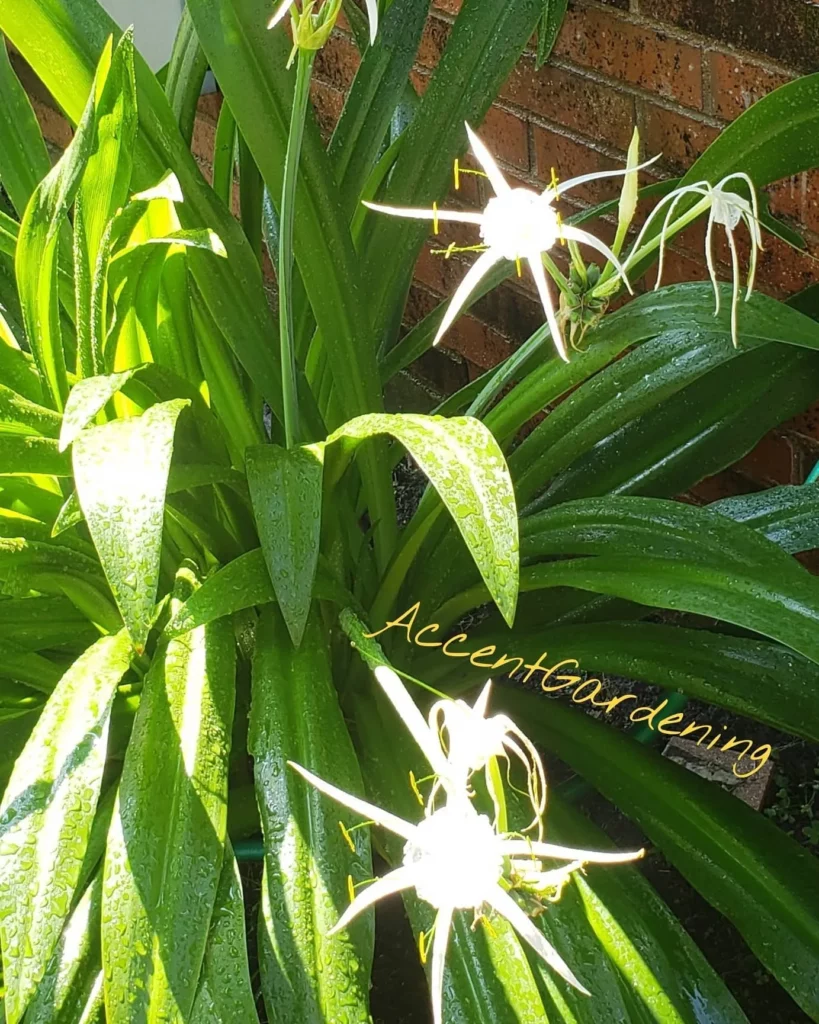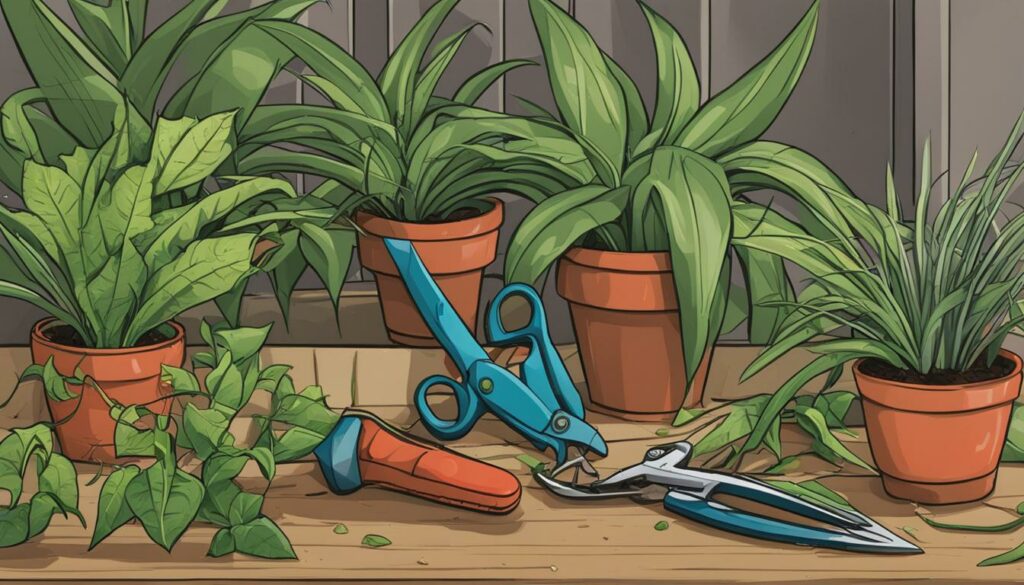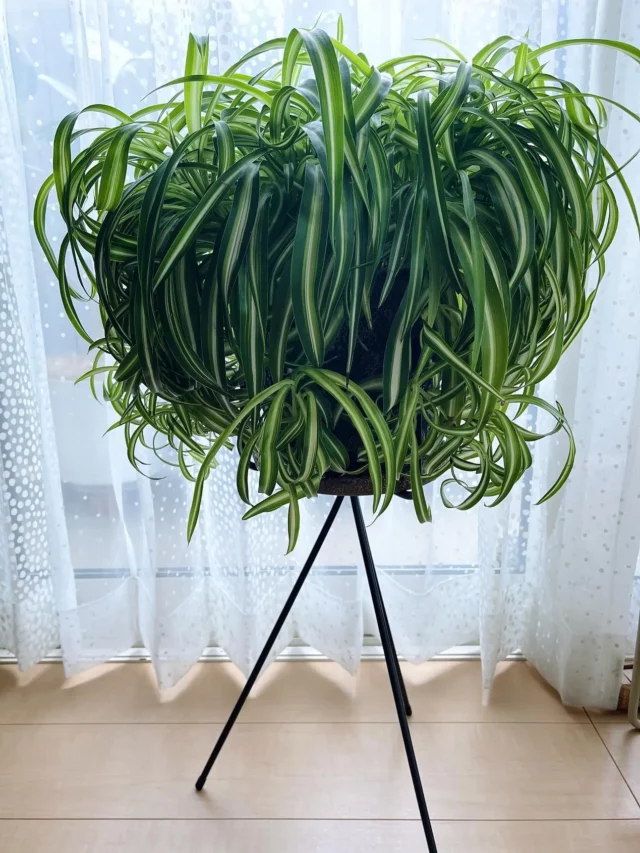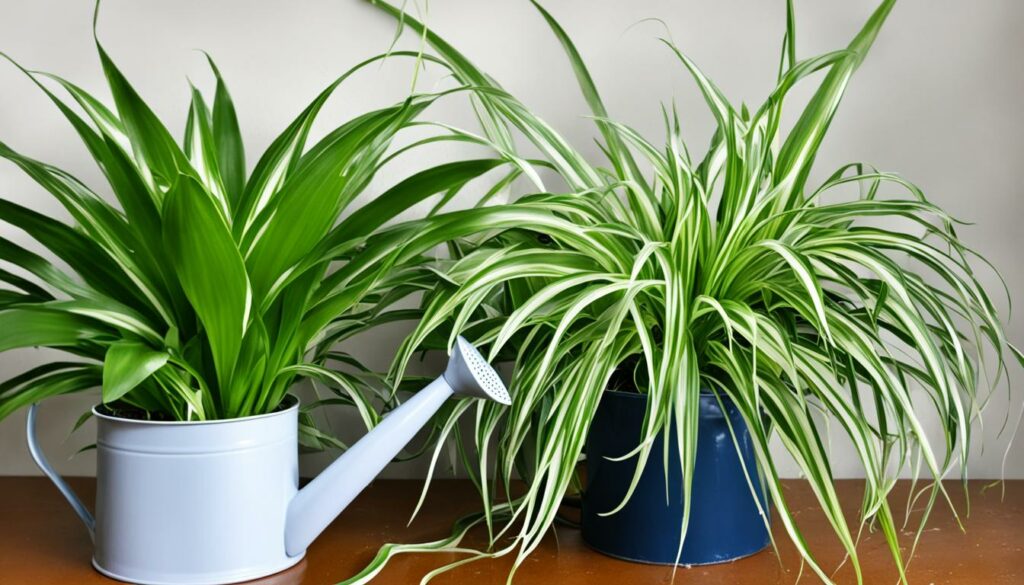Does your spider plant have brown tips? It’s one of the most frustrating things that can happen to this beautiful houseplants. But luckily, we’ve gathered experts to help you solve this problem and get your spider plant back to normal!
Understanding the causes of brown tips on spider plants



Several factors can contribute to this problem, ranging from improper care routines to environmental conditions.
Contributing Factors:
- Overwatering: Excessive watering is a common culprit behind brown tips on spider plants. When you water the plant too frequently or provide too much water at once, the roots become waterlogged, leading to damage and brown discoloration.
- Underwatering: On the other hand, underwatering can also cause spider plant leaves to develop brown tips. When the plant doesn’t receive an adequate amount of water, it becomes dehydrated, leading to stress and browning of the leaf edges.
- Low Humidity: Spider plants thrive in environments with moderate to high humidity levels. If the air is dry, especially during the winter months or in air-conditioned spaces, the lack of moisture can cause the leaf tips to turn brown.
- Inadequate Lighting: Insufficient light can also contribute to brown tips on spider plants. These plants prefer bright, indirect light, and if they don’t receive enough light, the leaves may suffer and develop brown discoloration.
- Improper Fertilization: Spider plants require regular fertilization to maintain their vibrant green foliage. However, using the wrong type or excessive amounts of fertilizer can lead to nutrient imbalances, which can manifest as brown tips on the leaves.
Tried and tested remedies for curing spider plants with brown tips



If your spider plant is showing signs of brown tips, don’t worry! There are effective remedies you can try to restore its health and vitality. Follow these practical solutions to cure your spider plant and bring back its luscious green foliage.
1. Prune damaged leaves
To kickstart the healing process, carefully trim off the browned or damaged tips of the spider plant’s leaves. Use clean pruning shears or scissors to make a clean cut just above the nearest healthy part of the leaf. Removing the damaged portions will encourage new growth and prevent further browning.
2. Adjust your watering routine
Proper hydration is key to preventing brown tips on spider plants. Ensure that you are neither overwatering nor underwatering your plant. Spider plants prefer slightly moist soil but should not be sitting in water. Water your plant thoroughly when the top inch of soil feels dry, allowing excess water to drain out.
3. Boost humidity levels
Spider plants thrive in environments with moderate to high humidity. Increase the humidity around your plant by placing a tray filled with water near it, using a humidifier, or grouping it with other plants. You can also mist the leaves regularly to provide extra moisture. Adequate humidity will prevent the tips from drying out and turning brown.
4. Provide adequate lighting
Insufficient light can also contribute to brown tips on spider plants. Ensure that your plant is placed in a location with bright but indirect sunlight. Avoid direct sunlight, as it can scorch the leaves. If natural light is limited, consider using a grow light specifically designed for houseplants to provide the necessary light spectrum.
5. Adjust fertilization practices
Improper fertilization can stress spider plants and lead to brown tips. Use a balanced, water-soluble fertilizer formulated for houseplants. Follow the instructions on the label for the correct dosage and frequency of application. Overfertilizing can cause salt buildup in the soil, resulting in leaf-tip burn.
Overwatering: A common culprit behind brown tips



Overwatering can lead to root rot, which deprives the plant of essential oxygen and nutrients. As a result, the leaves may exhibit brown discoloration and develop a wilted appearance.
Excessive moisture creates a favorable environment for fungal and bacterial growth, further compromising the plant’s overall health.
To prevent overwatering and protect your spider plants from brown tips, here are some helpful tips:
- Check the moisture level of the soil before watering. Insert your finger about an inch deep into the soil. If it feels damp, wait until the topsoil is slightly dry before watering again.
- Avoid watering on a rigid schedule. Instead, assess the moisture needs of your spider plant based on environmental conditions such as temperature and humidity. Adjust the frequency of watering accordingly.
- Ensure proper drainage by using well-draining potting soil and pots with drainage holes. This allows excess water to escape, preventing waterlogged conditions.
- Consider the size of the pot in relation to the plant’s root system. Avoid using excessively large pots, as they can retain more water than the plant requires.

Underwatering: A potential cause of brown tips on spider plants
Inadequate watering can have detrimental effects on spider plants, including the development of brown tips on the leaves. When spider plants are underwatered, they are deprived of the necessary moisture and nutrients they need to thrive.
Signs of underwatering can manifest in several ways.
The leaves may appear wilted, dry, or droopy. Additionally, the soil may become extremely dry, making it difficult for the plant to absorb water properly.
To prevent the occurrence of brown tips caused by underwatering, establish a proper watering routine:
- Check the soil moisture regularly by inserting your finger about an inch deep into the soil. If it feels dry, it’s time for watering.
- Water the plant thoroughly until water drains out of the bottom of the pot. This ensures that the entire root system receives moisture.
- Avoid excessive watering or letting the plant sit in standing water, as both can lead to root rot.
- Observe the plant’s response and adjust the watering frequency accordingly. Spider plants generally prefer slightly moist but not soggy soil.
The importance of humidity and lighting for healthy spider plants
Humidity is important for spider plants because they naturally thrive in tropical environments where the air is moist. Insufficient humidity levels can cause the tips of the leaves to turn brown and dry out.
To ensure optimal humidity, mist your spider plants regularly or place a tray of water near the plant to increase moisture in the air.
Proper lighting is essential for the healthy growth of spider plants.
These plants prefer bright, indirect light, and placing them in a spot with insufficient lighting can cause them to weaken and develop brown tips.
If you notice your spider plant is not receiving enough light, consider moving it closer to a window where it can benefit from natural sunlight. Alternatively, you can use artificial grow lights to supplement the lighting.
Correcting fertilization mistakes for vibrant spider plant foliage
Fertilization mistakes can lead to brown tips on spider plant leaves and hinder their overall vitality.
When it comes to fertilizing your spider plants, it’s important to follow some key guidelines. First, choose a suitable fertilizer specifically formulated for houseplants or foliage plants. Spider plants benefit from a balanced, water-soluble fertilizer with equal NPK (nitrogen, phosphorous, and potassium) ratios.
Next, ensure correct fertilizer application. Overfertilizing can result in salt buildup in the soil, causing root burn and brown tips on the spider plant’s foliage.
Avoid the temptation to provide excessive nutrients, as spider plants are generally low-maintenance and don’t require heavy feeding.
Follow the instructions on the fertilizer label and apply it at half the recommended strength every four to six weeks during the growing season.
To avoid fertilizer burn, it’s crucial to water your spider plant thoroughly before applying fertilizer.
This helps prevent the concentrated fertilizer from directly contacting the plant’s roots, minimizing the risk of damage.
Common Fertilization Mistakes to Avoid:
- Overfertilizing: Apply fertilizer at the recommended strength and frequency to prevent salt accumulation and brown tips.
- Using the wrong type of fertilizer: Choose a balanced, water-soluble fertilizer specifically designed for foliage plants.
- Neglecting to water before fertilizing: Always water your spider plant thoroughly before applying fertilizer to protect the roots from burn.

Maintenance tips for preventing future brown tips on spider plants
To ensure your spider plant remains healthy and vibrant, it’s important to follow these maintenance tips and best practices:
1. Regular inspection and grooming: Check your spider plant regularly for any signs of brown tips or other issues. Gently remove any brown or damaged leaves to promote new growth and prevent the spread of problems.
2. Proper watering: Establish a consistent watering schedule for your spider plant. Avoid overwatering, which can lead to root rot and brown tips. On the other hand, make sure not to underwater, as this can also cause the leaves to turn brown. Water your spider plant when the top inch of soil feels dry, ensuring good drainage to prevent water from pooling at the bottom.
3. Maintain appropriate humidity levels: Spider plants thrive in moderate humidity. To prevent brown tips, mist the leaves regularly or use a humidifier to increase the moisture in the air. This is especially important during winter months when indoor air tends to be drier.
4. Provide adequate lighting: Spider plants prefer bright, indirect light. Place your plant near a window where it can receive sufficient light without being exposed to direct sunlight. Inadequate lighting can weaken the plant, making it more susceptible to brown tips. Consider rotating the plant occasionally to ensure even growth.






Often the culprit of brown tips is water impurities. Many soft foliage plants push impurities to the leaf margins, causing browning. Filtering water can prevent this.